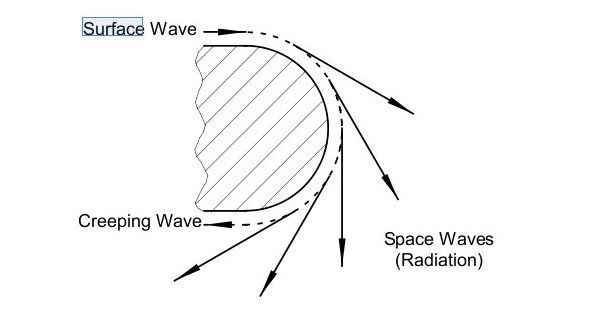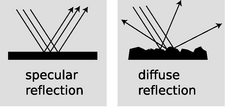You showed a handful of Russian papers on metamaterials. Which is not proof of anything, Russia's metamaterials industry and the amount of papers that Russia produces regarding the subject are a tiny fraction of China and the USA's
First you claimed that Russia has not broken into the field of metamaterials and now your argument has shifted to Russia has not published as much articles on metamaterial as China, this is after I called you out and proved you wrong, btw, I want a source showing how many papers have been published by said countries in regards to metamaterials.
In Summary, I made the claim that China has better computers.
You replied with if China has better computer why do their radars suck?
I then replied that computers are not radar.
Which you then claimed that computers are radar
I then answered that just because a radar is connected to a computer does not mean that radar is a computer
Holly mother of god, when did I say a radar was a computer?
This I what I said about radars:
ptldM3 said:
a radar is made up of many components, here's a few: antenna, transmitter modules, and of course the radar computer.
Can you see the list of radar components I listed? Can you see that a radar computer is one of the things on that list? Can you see that I never even remotely implied that a radar is a computer?
You told me that a radar was not a computer after you boasted about China having more advanced computers, I than gave you a hypothetical question, asking why Russian radars are better than Chinese ones--you than told me that a radar is not a computer.
Clearly I never said a radar was a computer, instead I implied that whosever’s radar has the better electronics/computers will ultimately have the better radar.
No **** sherlock, I never claimed that AESA had no computers
This is what you said:
If I took a sensor connected it to a bunch of resistors and capacitors and then to a motor and designed the circuit so that when say the sensor hit 100 volts that the voltage to the motor would be 0. Would you say that is a computer?
So why would you say that a radiation sensor sending voltages to a pad that lights up to form pictures a computer?
Clearly you tried to imply that a radar is not a computer or has no computers, either way, before that post, I established that a radar is not a computer, but rather that a radar uses computers, so the only other thing I can take away from your above quote is that radars have no computers. If this is not the case than please take some English writing classes so you can write a coherent and fluent sentence that makes sense and doesn't get misinterpreted.
Read the post before this one, critical stealth components are nanomaterials and metamaterials which China is clearly ahead in based on the size of the industry and numbers of papers written on each field.
What is China's size in the industry? Do you know Russia’s size? Have you ever considered things other than lousy papers written?
Russia has an enormous nanotechnology industry, this has little to do with papers written., instead it's funding.
Rusnano: Fostering Nanotechnology Innovation in Russia | MIT World
With a budget of up to $10 billion (USD) in government funds, RUSNANO co-invests in nanotechnology projects in areas such as solar energy, composite materials, nano-biotechnology, and mechanical engineering that have high potential for commercial or social benefit. RUSNANO stipulates that all companies that win funding must operate in Russia. Its goal is to ensure the production of the value of Russia’s nanotechnology industry reaches $30 billion by 2015.
This is one company in Russia receiving government funds, there are many more companies and institutions that are in the business of nanotechnology.
Chinese professors may write theories on nanotechnology and conducts some experiments, and the same holds true in Russia, but Russia also spends billions on research and development.
Like I mentioned before, most scientific papers do not apply to the military. Growing greener vegetables and making better tooth paste is worthless when you are trying to construct an aircraft. Moreover, Engineers and scientist do
their own experiments, meaning someone's journal article is of little importance.
If the Russia military has a requirement for a piece of technology, in this case lets say a new engine with a long service life, than Russian companies will conduct research.
This is one example of nanotechnology making it into Russian engines:
Ðîññèéñêàÿ êîðïîðàöèÿ íàíîòåõíîëîãèé
Rhenium - a rare metal is of strategic importance. On this basis, make a strong heat-resistant alloys and structural materials for the manufacture of aircraft engines and spacecraft, blades of turbine engines and power plants, the platinum-rhenium catalysts for oil refining, as well as for the nuclear and electronic industries. On this basis, make a strong heat-resistant alloys and structural materials for the manufacture of aircraft engines and spacecraft, blades of turbine engines and power plants.
This is the work of RUSNANO. There has been many nanotechnology products that have came from Russia and many articles that have been written, in fact there is a such thing a socks made from nanotechnology but in the context of building a better engine, those nano sox are good as garbage.
When Russian engineers and scientists want to built a long lasting engine with 4000 hours of service life than they will conduct their own research, they do not care too much about scientific journals.
Theres a lot of evidence that China is ahead of Russia in stealth due to critical stealth components being nanotechnology and metamaterials. Fields that China is #2 in after the USA.
Give me a source that says China is #2 in nanotechnology and metamaterials.
China and the USA both have large metamaterials industry and large metamaterials research (in terms of papers published). While Russia does not have either of these.
I'm fed up with your stupidity, I gave you Russian journal articals describing Russia's metamaterials, yet you still have the audacity to write that crap. Your tactics are cheap, no matter what proof I give you, you are still in
utter denial......how can one need get? Your clear goal is to put China on a Pedestal and at the same time make Russia look like crap.
And your 'stealth' theories about the F-22 and F-117 are so stoopid i'm not even going to bother.









 ...To the point where the only indication of the sphere's radar reflectivity is that initial 'specular reflection'. That is why certain millimetric bands are vulnerable to atmospheric loss, meaning the wavelength is the same as a raindrop's diameter, giving the radar rain echoes instead of the aircraft's. Increase the wavelength and there is sufficient energy to 'wrap around' the raindrops and travels onto the aircraft.
...To the point where the only indication of the sphere's radar reflectivity is that initial 'specular reflection'. That is why certain millimetric bands are vulnerable to atmospheric loss, meaning the wavelength is the same as a raindrop's diameter, giving the radar rain echoes instead of the aircraft's. Increase the wavelength and there is sufficient energy to 'wrap around' the raindrops and travels onto the aircraft.



